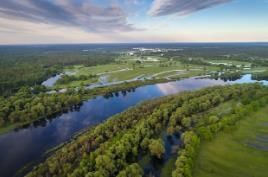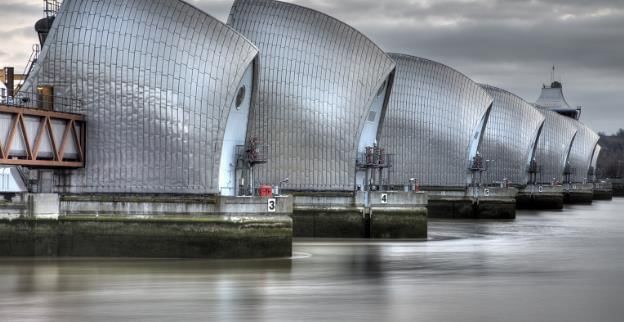Explore Rivers | Geography for Year 6 PDF Download
| Table of contents |

|
| What is a river? |

|
| How are rivers formed? |

|
| Why are rivers important? |

|
| Rivers and the water cycle |

|
| River Pollution |

|
| River Management |

|
What is a river?
A river is a flowing body of water that drains the land, moving from a higher elevation source, such as mountains or hills, to another body of water like a lake, sea, ocean, or another river. It travels within a channel defined by banks on both sides and a bed at the bottom. During heavy rainfall or melting snow and ice, rivers may overflow their banks, spilling onto adjacent floodplains.
 A floodplain of the River Pripyat
A floodplain of the River Pripyat
How are rivers formed?
Rivers typically originate in upland areas where rainwater or melted snow begins to flow downhill due to gravity. As they move across the landscape, rivers meander around obstacles like hills or large rocks, eventually reaching another body of water. Through their flow, rivers erode the land, wearing away soil and rock. Over time, this erosion can carve out valleys, gorges, or canyons, depending on the river’s strength. Sediment, including soil and rock particles, is carried along by the river. Smaller rivers are often called streams, brooks, or creeks, while those originating from underground sources are known as springs.
Why are rivers important?
Rivers are vital for multiple reasons:
- They provide habitats for diverse wildlife.
- They supply freshwater for settlements, agriculture, and industries.
- They support leisure and tourism activities.
- They enable navigation for exploration, trade, and commerce.
- They transport nutrients and sediment, shaping the landscape.
- They offer energy for hydroelectric power generation.
Rivers and the water cycle
- Rivers play a crucial role in the water cycle by transferring water to oceans.
- Human activities, such as pollution and land use changes, significantly contribute to river and ocean pollution and can increase flooding events.
- Flooding and drought can devastate wildlife and human communities, but careful environmental management can mitigate these risks and reduce pollution.
River Pollution
- In the UK, rivers face pollution from sources like agricultural waste, abandoned mines, and household sewage.
- This pollution threatens wildlife, including species like kingfishers, dragonflies, and otters, which depend on clean water.
- Healthy rivers also support tourism and local economies, as people visit to enjoy the wildlife and natural beauty, highlighting the environmental and economic importance of maintaining clean rivers.
River Management
The Thames Barrier is a key example of flood defense, protecting London from tidal flooding. With climate change increasing the risk of flooding over time, effective river management is essential to address these challenges.
 The Thames Barrier
The Thames Barrier
FAQs on Explore Rivers - Geography for Year 6
| 1. What is a river? |  |
| 2. How are rivers formed? |  |
| 3. Why are rivers important? |  |
| 4. How do rivers relate to the water cycle? |  |
| 5. What are the main causes of river pollution? |  |














